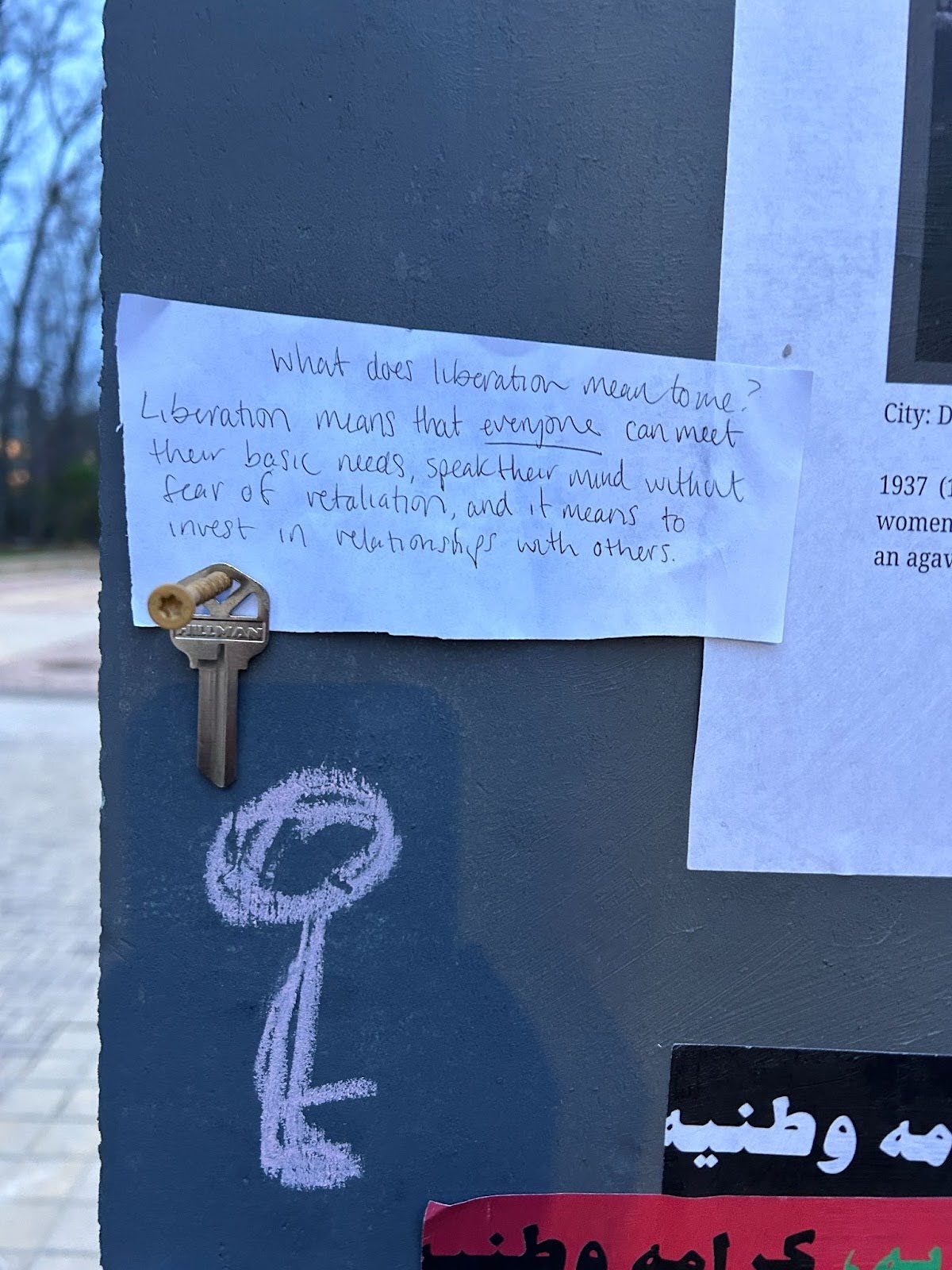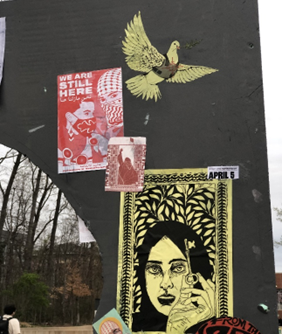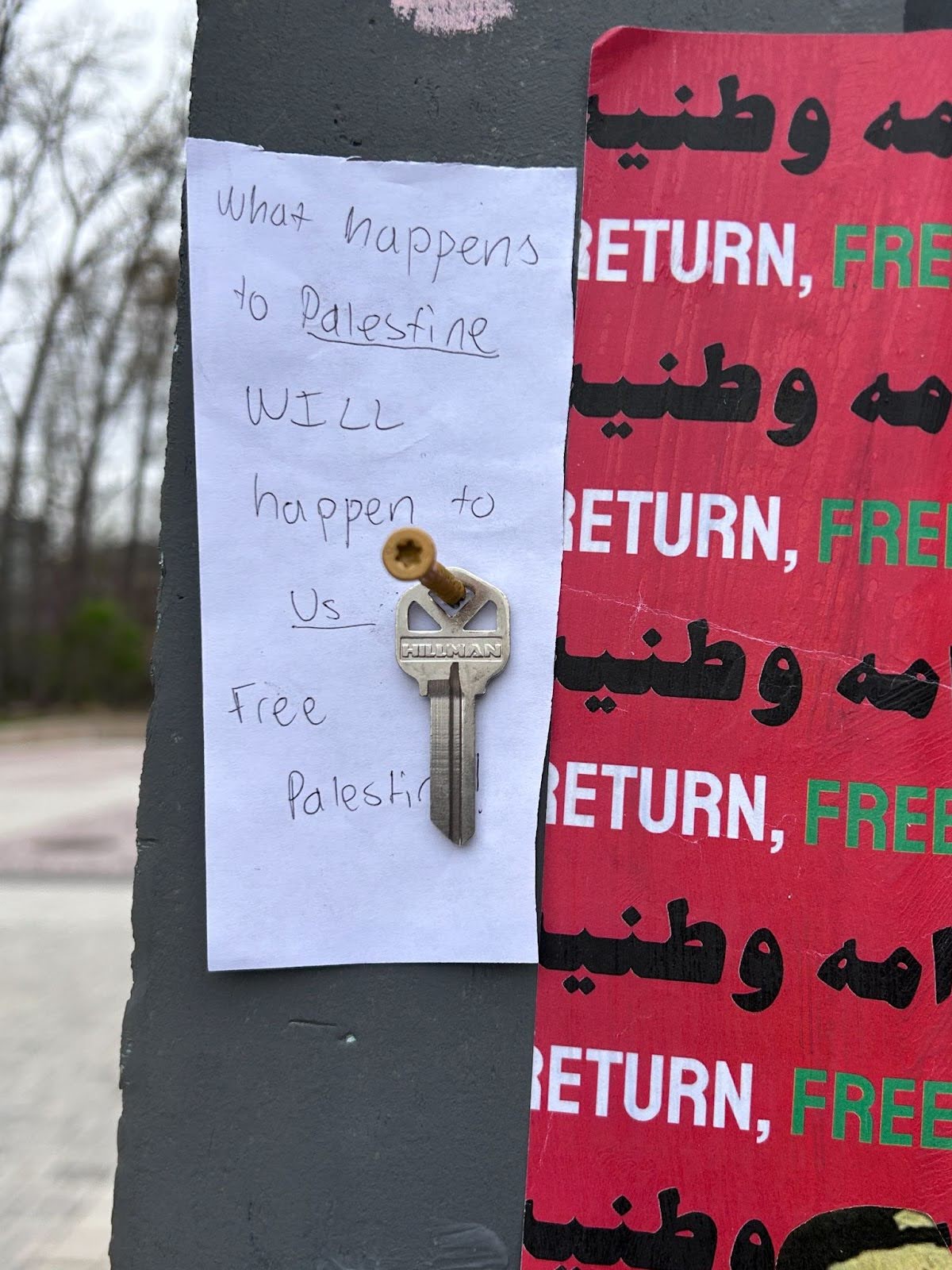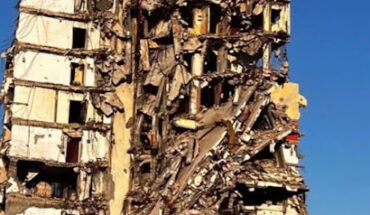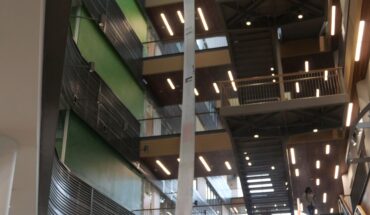GMU4palestine hosts an “Apartheid Wall” demonstration on Wilkins Plaza
BY DECLAN WILLIAM REES, STAFF WRITER
On April 2, George Mason University Coalition for Palestine (GMU4palestine) gathered at Wilkins Plaza for their second “Week of Rage” event, where organizers demonstrated around an “Apartheid Wall” centerpiece. The other events included a “Healing Circle” and film screening. The “Apartheid Wall” is marked as the first Palestinian-cause demonstration on the Plaza since Students for Justice in Palestine (SJP) was suspended and the FBI raid of two students’ homes in November.
Prior to the event, a number of Mason police officers, including Chief of Police Carl Rowan Jr., were spotted next to an unmarked vehicle scouting out Wilkins, dispersing moments before the student organizers displayed the art sculpture.
Moments later, organizers exhibited an interactive archway piece inspired by the Aida Refugee Camp in Bethlehem. When asked what the symbolism behind the arc was, an organizer explained the significance of “highlighting the segregated society that Palestinians live in, separated by walls overseen by Israeli military governance.”
“The right of return” was the focal point of the event. “The right of return” has been argued as an international law since 1978. Stated in a study brought to the United Nations in the same year, the “right of return” is the right that all people, including stateless persons and refugees, be guaranteed the right to return to their place of origin and family’s home. The right is often invoked to call upon the return of refugee groups to their country from which they were displaced.
Artworks on the archway featured content of the Palestinian experience, from description of expulsion from Palestinian territories, stories about resilience and “sumud,” meaning steadfastness in Arabic.
One poster read, “WE ARE STILL HERE,” with a woman wearing a keffiyeh scarf wrapped around her head, and another woman wearing traditional Native American earrings and garments, suggesting a shared solidarity between the two communities.
A noted piece of the “Apartheid Wall” was a Muslim woman wearing a hijab holding up a key with olive branches in the background. The key alludes to the many Palestinians possessing old keys to their homes after the 1948 Nakba.
Many passersby stopped at the archway and talked with one another about the subject of Palestine, protections of free speech and the ongoing interim suspension of the SJP.
During the event, a student passing by raised their fist and chanted, “Free, free Palestine!” When approached for an interview, the student declined and explained that due to the increased presence of ICE on campus and the crackdowns on international students nationwide they were worried that an interview would put a target on their back, as they believed that speaking out could jeopardize their education, safety, and future.
One student felt “a desire for change,” and “wished that more people cared.” They expressed that “it feels like empathy has become something of a political and philosophical debate, rather than a human feeling.”
Another Mason student was vocal about their support for the event. “Anyone living in the United States should be paying attention [because] we are directly involved,” the student said, further emphasizing the importance of Mason’s diverse campus and the significance of the Palestinian people.
Throughout the event, students occasionally passed by and pumped their fist; others wrote a note to hang on the arch. One message read, “What happens to Palestine will happen to us. Free Palestine.” Students involved in conversations asked each other whether anyone knew when SJP would be reinstated.
By the end of the night, some flyers made by GMU4palestine were added to the middle of the archway, reading “DIVEST FROM DEATH” and “GMU AGAINST GENOCIDE.”


